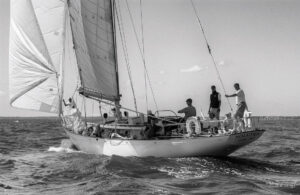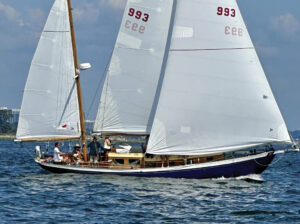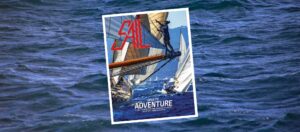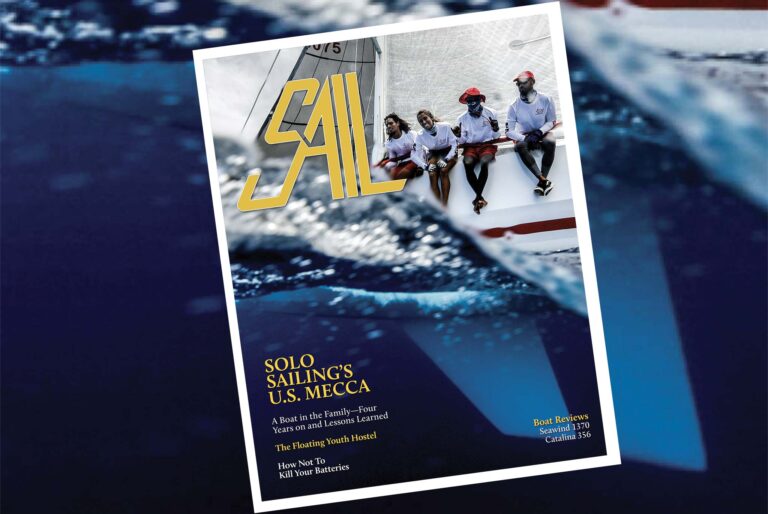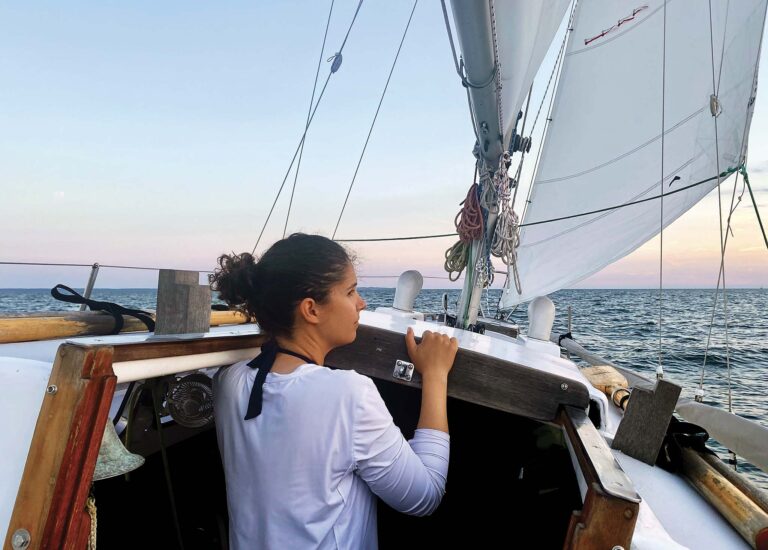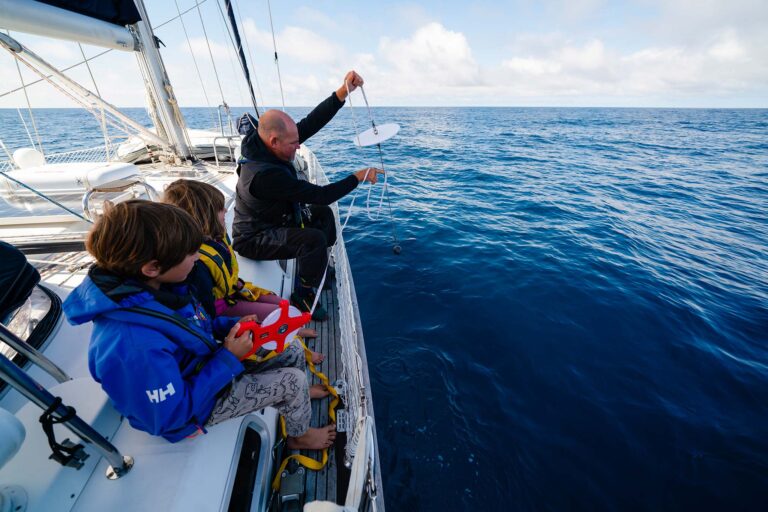
Darkness had fallen and the howling wind almost drowned out the voices coming over the VHF radio.
“Lights on! Blow horns!”
“Make noise to alert the crew!”
“Shine the spotlight on the cat by the shore, it’s dragging dangerously near our bow.”
These were calls to action, not exactly in panic mode, but certainly more urgent than those usually heard.
The cat was now wending its way about the anchorage, its owners alerted during their cocktails and dinner aboard another vessel.
“We just lost our dinghy!” was the next shouted exclamation.
A short 20 minutes earlier, drops of rain had splattered on our hull, drops that quickly became heavy, thick splashes indicating a rising gale. We quickly closed the hatches and with the first flash of dreaded lightning made a dash to switch the VHF radio first to Channel 16 and then Channel 68.
Now the squall was truly assaulting the 50 boats anchored at Hamburger Beach, Georgetown, in the Exuma islands. Gusts were clocking at 60 knots. Adding deck, steaming and navigation lights to the anchor light—we wanted to see and be seen—I turned to my husband. “Well, this is a first for us.” His face had morphed from its usual relaxed expression to one of concern. He kept the engine idling in gear to keep pressure off the 125ft of anchor chain and 45lb CQR anchor. “Boy, am I thankful we chose this ground tackle when we outfitted the boat,” he said.
The captains on the boats next to and in front of us were also now doing the helmsmen’s two-step: once to port, turn, once to starboard, turn, repeat, all with an eye toward avoiding a three-way collision. Their performance was admirable, as the wind, rain and radio messages provided background accompaniment.
The radio came to life again: “There’s a mayday report of a woman in the water.” Instantly, there was the reply: “She is safe aboard another boat.” More radio voices: two medical emergencies were taking place. “What would we do without our radios?” I said, not sure if I could even be heard over the sound of the whistling wind. Replies immediately came from three separate cruisers—an ER nurse, a doctor and an EMT tech.
And so it went for 90 minutes. The wind eventually settled back down again. The rain stopped. Slowly everyone crawled into their bunks to try and get some sleep, heartbeats still racing.
The day dawned with a clearing sky and benign seas. Stories were shared as we visited the neighboring boats. One couple described the fear they experienced during the squall as they set about re-righting their dinghy and retrieving their outboard from the sea—heavy rain pelting them throughout, soaking through their clothing. In their near-panic, they forgot to close the open hatch over their berth and spent the rest of the night wet and miserable.
As for the medical emergencies, the first patient had been taken to a clinic in town with a suspected heart attack. But it turned out to be a diabetes low blood sugar situation. The second patient had a kidney stone. Each came on the radio net later in the day to offer their thanks.
Such is the close-knit boating community. Looking out for each other is the unspoken creed by which we live.
December 2018

